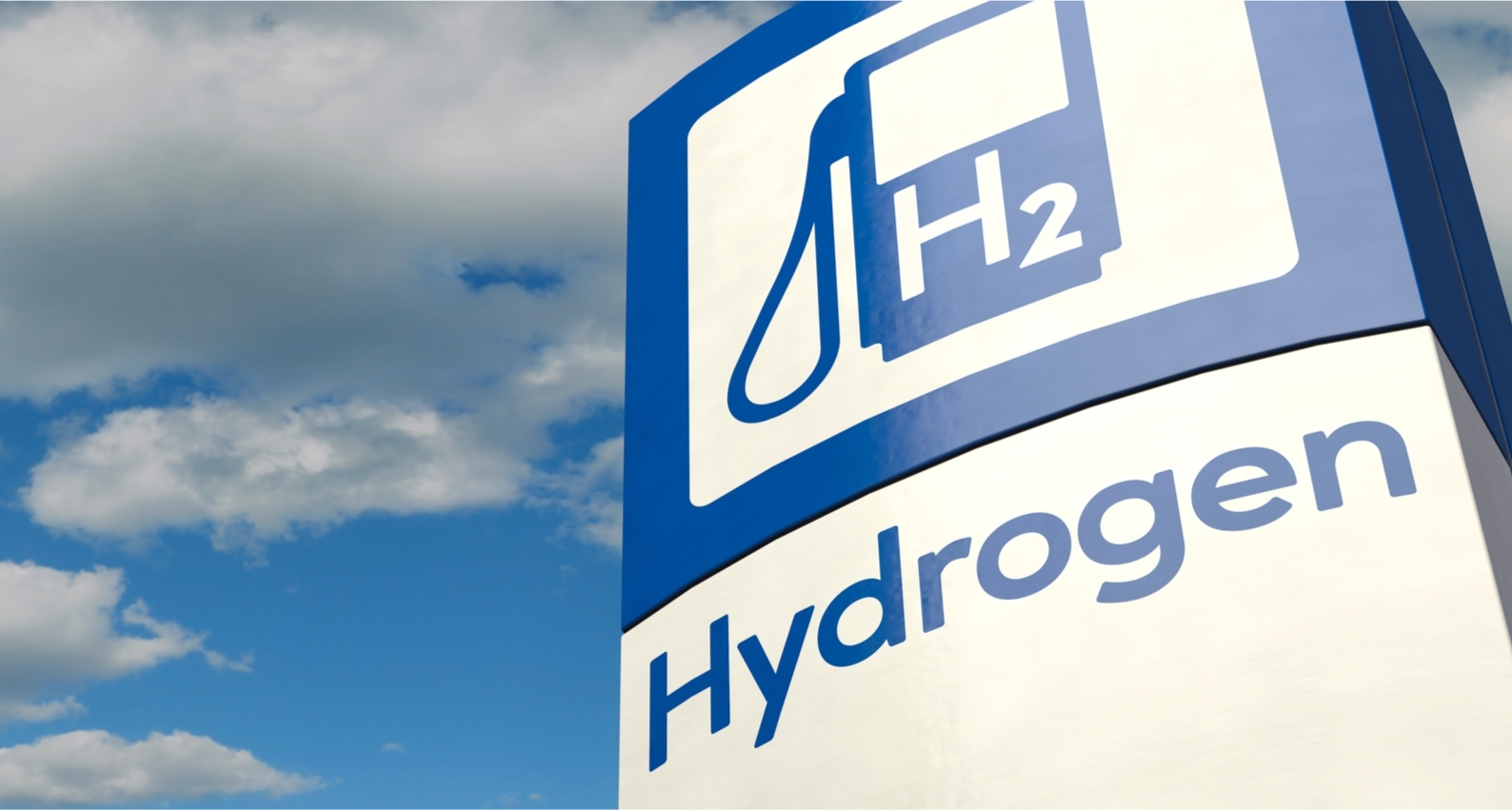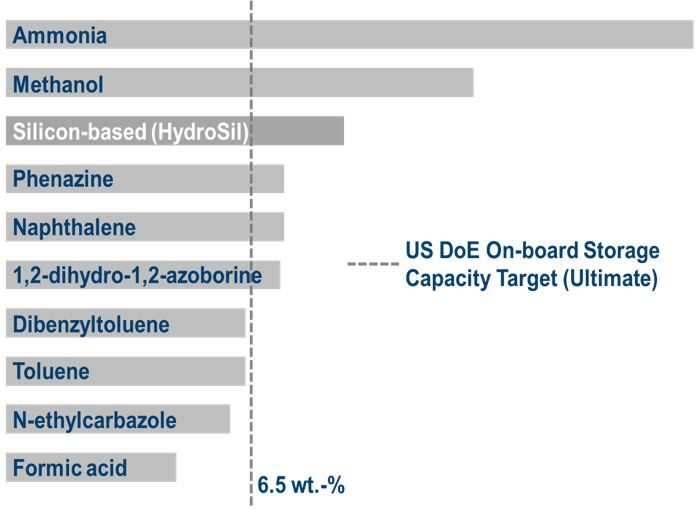Silicon-based LHCs: Driving Carbon-free Hydrogen Economy
Published on 30 Mar, 2020

In our previous article, we shared an overview of liquid hydrogen carriers (LHCs) and their role in the rapid adoption of hydrogen as a fuel. Liquid organic hydrogen carriers (LOHCs) are currently the popular choice for storing and transporting H2. However, these carriers eventually degrade over time in the form of carbon emissions. Recently, silicon-based carriers, which are free of carbon, have been introduced as a solution to the problem. In this segment, HySiLabs has developed HydroSil, a promising silicon-based LHC. This article highlights the implications of HydroSil on current and future hydrogen economy, as expressed by Vincent Lôme, Ph.D., CSO and co-founder of HySiLabs.
Companies such as Chiyoda Corporation have demonstrated largescale use of SPERA hydrogen (toluene LHC), while Hydrogenious LOHC Technologies GmbH started commercializing its dibenzyl toluene-based technology for storing and transporting H2. However, these carriers degrade over time due to carbon emissions. Silicon-based LHCs, on the other hand, are free of carbon and a sustainable solution for storing and transporting H2. Currently, silicon hydrides are relatively less researched compared to dibenzyl toluene, toluene, ammonia, etc. for use as LHCs. HySiLabs, a French company, has seized on this and developed HydroSil, a silicon-based, carbon-free LHC with 8.7 wt.% capacity, the best among commercialized LHCs.
We spoke to Vincent Lôme, Ph.D., CSO and co-founder of HySiLabs, to understand the probable reasons for delay in adoption of hydrogen, the solution their innovative technology will provide, the advantages it has over other LHCs, and its likely influence on current and future hydrogen economy.
According to you, what is the biggest hurdle in adoption of H2?
The technologies associated with electrolysers for producing H2, fuel cells and even fuel cell electric vehicles are mature. However, the technical challenges associated with safe storage and transportation of H2 persist. Existing tube trailers (compressed @ 200bar) for transport are another hurdle because even when deployed at full scale, they have lower H2 storage capacity (wt.%) and come at a higher cost. With LHCs though, companies could easily overcome these hurdles.
What advantages do LHCs have over the existing hydrogen transportation and storage infrastructure? Under what conditions would the existing infrastructure be more beneficial than LHCs?
LHCs offer more H2 storage capacity (wt.%) than existing technologies (for example, compressed or liquid H2). The equipment needed to carry out LHC operations are comparatively cheap and obviously simpler. This drastically reduces the delivery cost of H2. For instance, H2 is transported as a liquid via a cryogenic process, which is energy- and cost-intensive. In case of LHCs, this step is eliminated.
Existing techniques (such as compressed) are best suited for carrying small quantities of H2 over short distances. They are also preferred in case of high stock turnover, since the stock has a limited shelf life. Transporting H2 as gas through pipelines is more beneficial if there is a requirement of bulk quantities.
Which are the most promising LHCs? What do you consider as important parameters for evaluation and selection of LHC?
Liquid organic hydrogen carriers (namely, dibenzyl toluene and toluene), boron hydride and silicon hydride are among the most promising innovative LHCs.
While evaluating and selecting LHC, the important parameters would be storage capacity (wt.%), flexibility and simplicity to operate. The other requisites are that the carrier should be overall emission-free, cost-effective, sustainable and safe.
What approach did you adopt in selecting silicon-based carriers? And what was the objective?
Our approach to select silicon-based carriers is quite ambitious — what we like to call an exciting "playground". It is also a technical field quite "free to operate". HySiLabs has taken advantage of this fact and is setting up a strong IP portfolio.
Regarding our objective, we believe that If you want to eliminate carbon emission from the fuel distribution model, it is best not to rely on carbon-based products as fuels at all.
Having said that, petrol derivatives are not only being used as fuel, they are also the starting point of many chemical processes (drugs, plastics, specialty products, fabrics, etc). Hence, finite fossil resources should be saved for these uses where they cannot be replaced.
What advantages do silicon-based carriers have over other LHCs?
|
HydroSil showcases an energy-free H2 on-demand release. It is carbon- and emission-free; has low processing needs and higher use; and is easy to recycle. HydroSil is a silicon hydride based on the most abundant material on Earth: silicon dioxide, which is not subject to cycle fatigue. HydroSil contains the best capacity (8.7wt.%) when applied to H2 transport. It releases 100% hydrogen in <15 seconds. It is also flexible and can be stopped immediately. HydroSil can release H2 at 50 bar and above. |
Fig.1: Storage Capacity of LHCs vs US DoE Target (wt.-%) |
LHCs require hydrogenation and dehydrogenation. What is the impact of these processes on the overall delivery cost/sustainability aspects of hydrogen? Are there any alternative solutions to bring down the costs associated with these steps?
Hydrogenation and dehydrogenation are both complex systems. They require high energy input and hence have a negative impact on the overall delivery cost of hydrogen. Instead, HydroSil dehydrogenation is a simple energy-free step. It is also free from the issues like:
Lack of sustainability: Eventually, due to carbon emissions, liquid organic hydrogen carriers have a limited lifetime. The organic material degrades, and it is not a sustainable option in the longer run.
High cost: Centralized and upscale hydrogenation and dehydrogenation plants offer the possibilities of renewable energy capture/storage and process optimization, thereby lowering costs. On the other hand, LOHC requires additional decentralized energy input for dehydrogenation.
For applications requiring decentralized hydrogen release (for example, refueling stations), HydroSil is best suited as it does not require energy input for dehydrogenation. Therefore, you could deploy H2 stations without synchronizing the release with renewables production; this makes HydroSil the greenest LHC available.
Can you elaborate on the energy-free dehydrogenation of HydroSil?
The dehydrogenation process of HydroSil is technically a spontaneous catalytic hydrolysis. We trigger the hydrogen release while mixing HydroSil with water. The release is virtually instantaneous due to our patented catalyst. Hence, the hydrogen rate is directly proportional to the rate of liquids being mixed.
On the other hand, LOHC dehydrogenation is a catalytic endothermic reforming, which means it is driven by the amount of heat applied to the material.
Are any other chemistries under investigation that could serve as LHCs and replace existing chemistries?
Ammonia solutions, formic acid and methanol reforming can be potential opportunities. However, ammonia is associated with safety- and pollution (NOx emissions)-related challenges, while the other two are carbon-based and release emission throughout their use. Until a solution can be invented to overcome these issues, it will be difficult to tap into these options.
For mobility (passenger cars, trucks, buses, etc), can LHCs replace existing onboard tank storage of hydrogen?
Indeed, it can, especially energy-free dehydrogenation LHCs (for example, HydroSil). They are especially suitable for bigger vehicles. Currently, passenger cars are being developed with onboard pressurized storage, which is safe, simple and has good performance.
According to a recent report by Hydrogen Council, hydrogen prices will be competitive by 2030 (down 50%). What role would LHCs play in achieving this target?
Scaling up centralized LHC technologies (central H2 production and capture) will lower cost per kg. LHC with more storage capacity (wt.%) will be able to transport more hydrogen for a given distance; this would lower the cost associated with multiple transport arrangements. For instance, 1 liquid trailer containing HydroSil equals to 7 compressed tube trailers. Furthermore, 1 liquid trailer costs roughly $50,000, whereas a single compressed tube trailer costs 10 times more and a cryogenic trailer 15 times more.
What are the challenges associated with LHC technology? How can these be tackled?
LHC is still not as mature as existing technologies and there is less awareness about it. Financial investments are needed to accelerate the largescale deployment of LHCs and generate awareness about the technology.
Can LHCs be a game changer in the faster adoption of hydrogen? If yes, how?
Definitely. LHC is a disruptive technology that could enable a faster deployment of hydrogen. It is based on a model like the existing petrol fuels—the less you change the system, the faster the process.
About Vincent
Vincent Lôme, Ph.D., is co-founder and CSO of HySiLabs. He holds a degree in biotechnology, robotics and chemistry from Aix Marseille University. He has worked in several laboratories on the development of early-stage technologies. He is focused on research & innovation: driving technical development and securing IP portfolio.
About HySiLabs
HySiLabs was founded in 2013 by Pierre-Emmanuel Casanova and Vincent Lôme. HySiLabs developed a breakthrough solution for the transportation and storage of hydrogen, by charging it in a safe liquid carrier (HydroSil). In liquid form, HydroSil can carry H2 everywhere without any restrictions and store it for long periods of time, just like conventional fuel.

